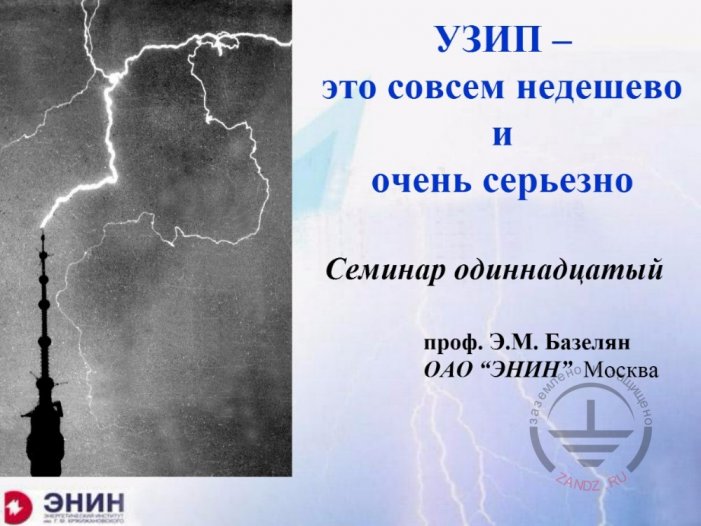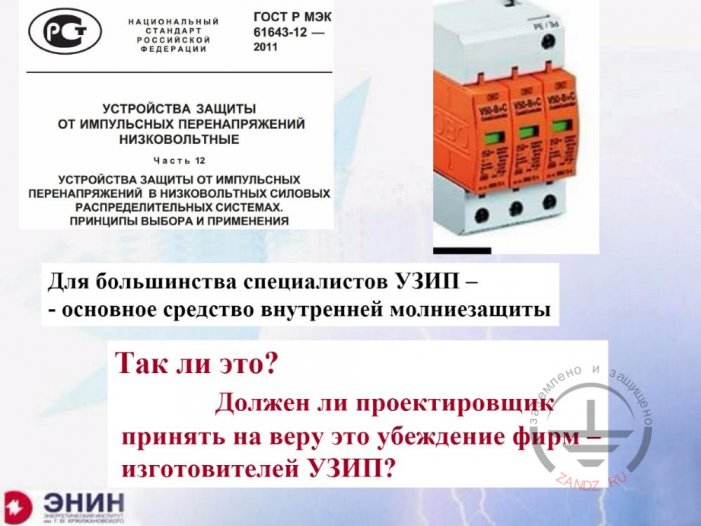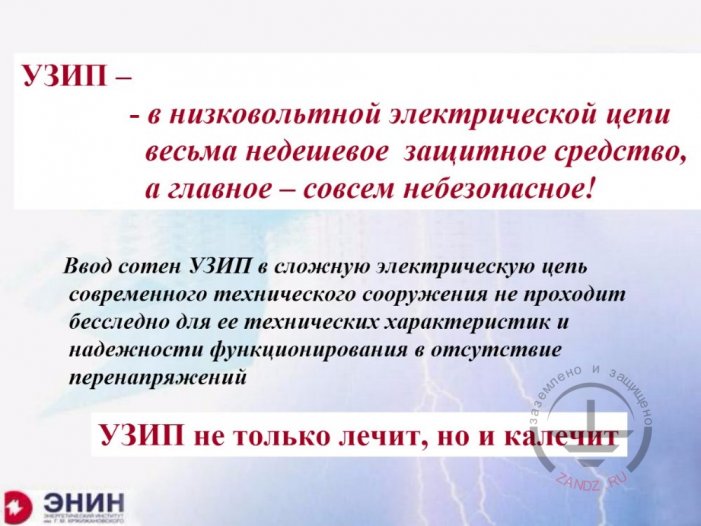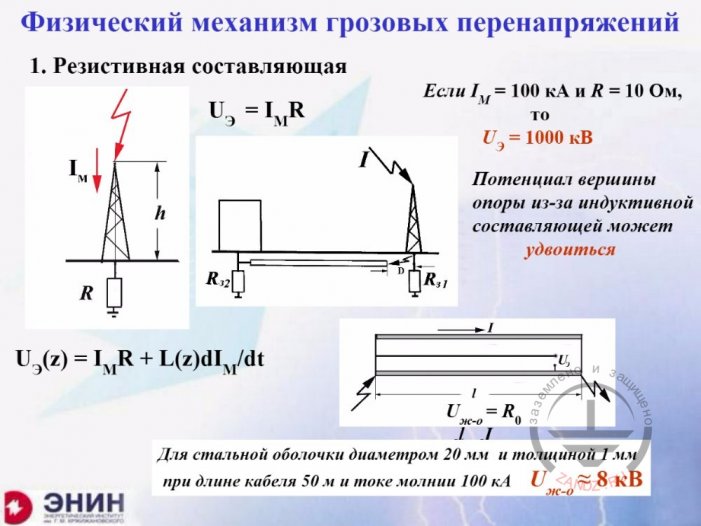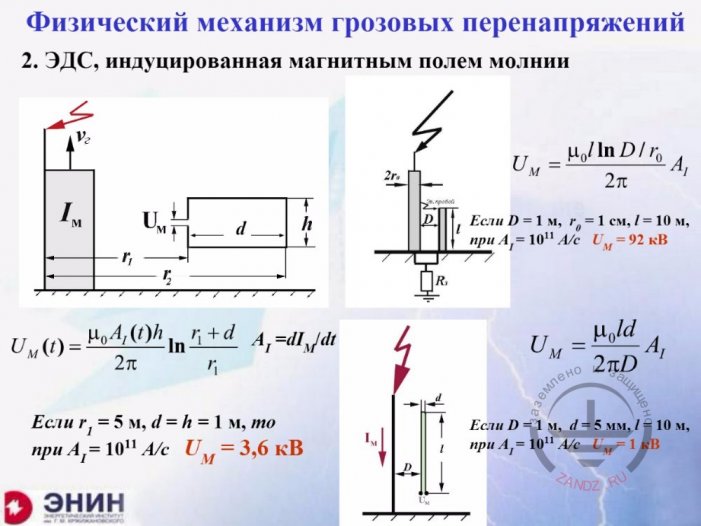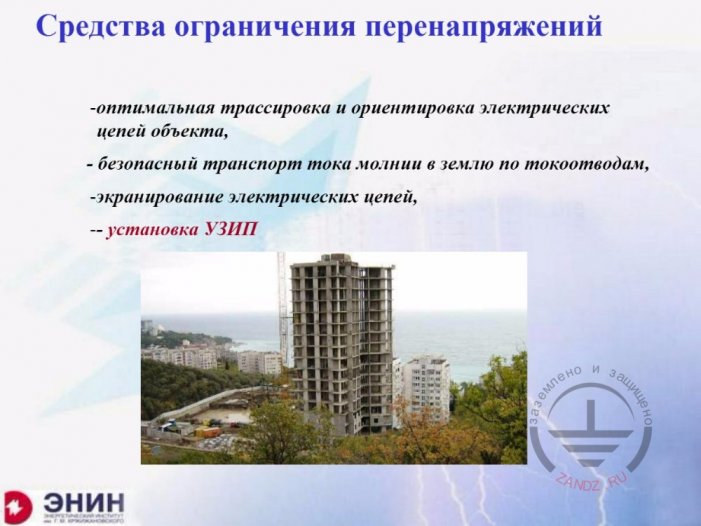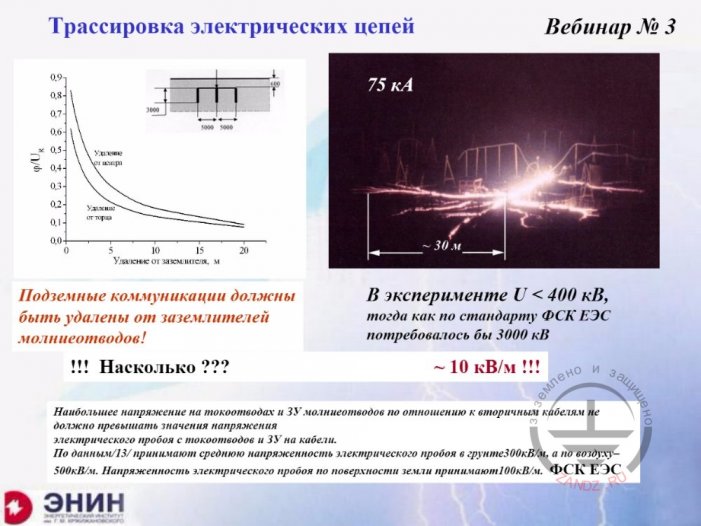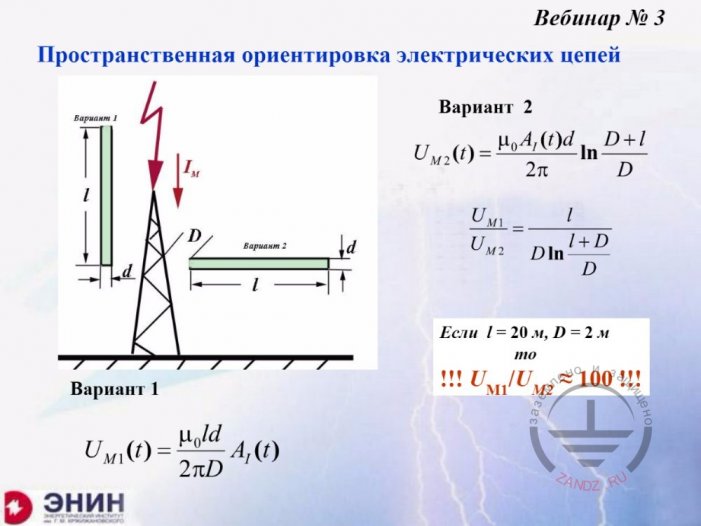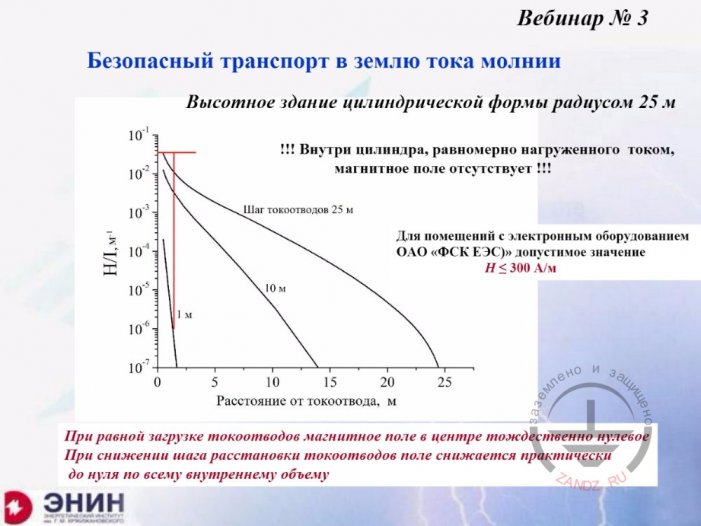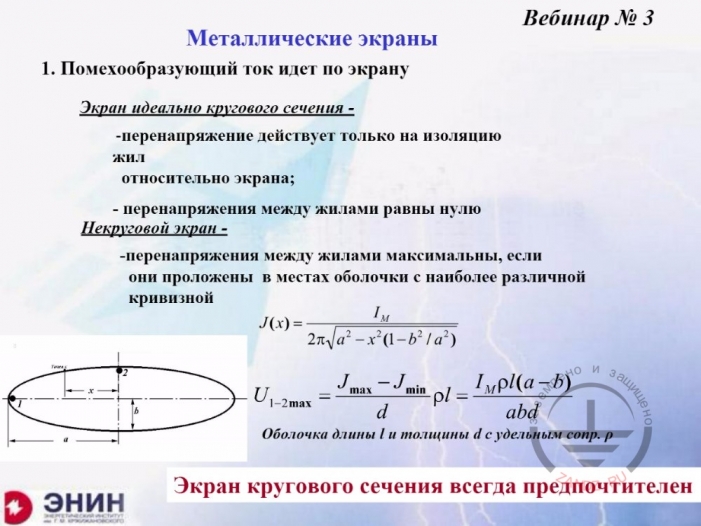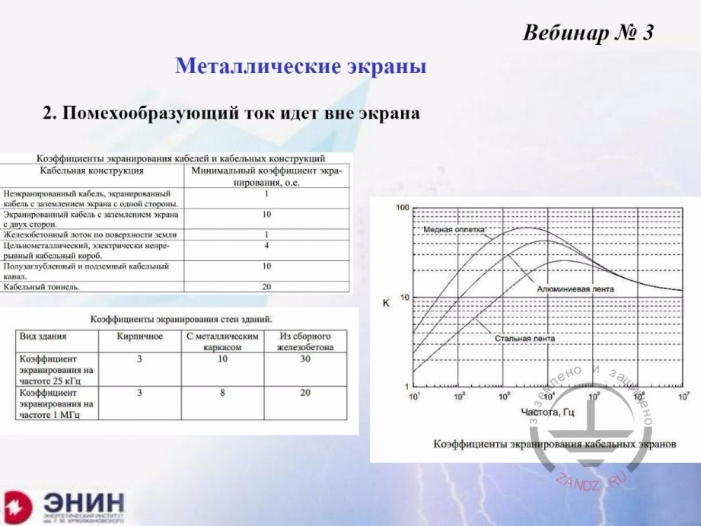The thirteenth webinar of a series "Grounding and lightning protection: issues and problems arising in the design"
(was held on February 10, 2016 at 11:00)
Full-screen mode with the quality of "720p" is recommended.
This year we are holding another webinar on the use of SPDs to limit surges in low-voltage electrical circuits. The reason for this is the numerous questions from the designers of internal lightning protection. Their cause is trivial enough. Russian lightning protection regulations cover the practical application of SPDs in very general terms, and only in SO 153-34.21.122-2003 instruction. There are no specific requirements, so the designers are left alone with the recommendations of SPD manufacturers. The situation is disparate. Manufacturers are primarily interested in the mass sales of products that are easy to manufacture and are expensive. For this purpose, they issue brochures with the basic assessment of storm surge levels and lightning currents coming through the SPDs, which clearly tend to turn designers' attention to the "right" protection elements.
Today, due to the serious financial complications in the country, such a situation can hardly be considered acceptable. An evidence-based guidance for the selection of SPDs based on the reliable calculations of thunderstorm surges and current loads is desperately needed. The upcoming seminar will form a basis for solving this problem.
It is worth reminding once again that the placement of SPDs in an electrical circuit is a very strong tool. Its use is justified only in the case if all the possibilities to limit dangerous lightning effects through the installation of external lightning protection devices have been exhausted. Much-hyped typical examples with hundreds of SPDs installed in the circuits of the protected facility cannot be considered a constructive solution, as any SPD is quite a complex appliance with a very specific reliability. Its very presence in the circuit may adversely affect the reliability of the whole facility and its technical specifications.
Designers should always pursue a task of minimizing the number of SPDs. This is hardly possible without a reliable assessment of hazardous lightning effects on the protected equipment and their comparison with the permissible parameters specified by the manufacturer.
To demonstrate the said above, we relied on specific questions asked by the audience. Most of these questions were answered either in the form of specific recommendations or as guidelines to the quantitative method of solving the problem.
Webinar text. Page 1
Quick navigation through slides:
Page 1:
1. SPD is not cheap at all and very serious
2. Standard of International Electro Technical Commission
3. SPD – effective medicine
4. Physical mechanism of thunder overvoltages Part 1
5. Physical mechanism of lightning overvoltages Part 2
6. Surge protection devices
7. Harnessing of electrical circuits
8. Spatial orientation of electrical circuits
9. Safe transportation of lightning current into the ground
10. Metal shields Part 1
11. Metal shields Part 2
12. SPD. Need of installation
13. Calculation of lightning pulse current through SPDs
14. Real distribution of lightning current
15. Lightning strike into overhead power lines. Simple situation
16. Lightning strike into a building. Simple situation
17. Important peculiarity of direct lightning strike overvoltage
18. Real growth speed of magnetic field from lightning current
19. Influence of final conductivity of the lightning current
20. Calculation of overvoltages on simplified equivalent circuits
21. Effort of answers to certain questions
22. Tank farm with oil products
23. Is there any danger connected with the use of SPD?
24. Does grounding resistance matter at the SPD operation choice?
25. For what grounding systems it is correct to use SPDs?
26. Does it make sense to install SPDs of one class?
27. How effective are SPDs of class 1+2?
28. How to choose safety devices in SPD circuits?
29. What SPD classes must be installed and where?
30. Are there factors influencing SPD operation?
31. What is the probability of SPD “malfunction”?
32. Are there any peculiarities for choosing SPDs?
33. Questions and answers
Estimated reading time: 64 minutes
УЗИП – SPD is very serious and is not cheap at all
- Today we hold the eleventh webinar with the professor and we will discuss surge protection devices, it is an acute issue. These are surge protection devices or as we call them - SPDs. Previously, we collected questions from designers to understand, what are the problems in design, selection and installation of surge protection devices. These questions were sent to the professor and he will answer them during the meeting today. I think my introduction speech is over here. I give the floor to Eduard Meerovich. Hello! May we begin?
- Good afternoon, Alexey! Good afternoon, dear audience, colleagues. Maybe I should say I'm very happy to meet you. Unfortunately, the joy is only one sided. This is the second webinar on this subject and I understand the sitatuaion of SPDs remains complicated for designers. I know why. SPDs are designed by companies engaged in power supply to buildings and facilities. These are the people knowing power industry well. They are able to design required circuits properly, but installation of SPDs relates to another kind of specialization. Any power supply company has a high voltage laboratory engaged in suppression of surges. These people have been trained absolutely in other way, because overvoltage is always a pulse transient process to be calculated by using other methods. And the experience we have is quite another practice. When I've been getting ready for the seminar, I tried to see the following thing. Now I take our national regulatory documents and see if the designer can do something he does not understand based on relevant codes and standards.
International Electro technical Commission Standard
Low voltage surge protection devices;
Part 12;
Surge protection devices in low-voltage power distribution systems;
Principles of choice and application;
For the majority of SPD specialists it is the main mean of internal protection;
Is it so?;
Should the designer take this belief of the SPD manufacturers for granted?
- The principal document is the standard of the International Electro technical Commission, IEC Standard which was translated into Russian, it is named as surge protection device in high-voltage networks. I looked through this standard and found, that any designer addressing to it will get no useful information at all. What should the designer do? He is forced to do the following. Search on the Internet trying to select relevant articles and recommendations. I tried to do the same. What did I find? I found many articles with recommendations. The authors of them are SPD manufacturers but not designers of SPD installation. These articles have one only goal- sell more and more SPDs. Because of these recommendations, they confuse designers again. What to say? Once looking at all these articles, SPDs seem to be the only thing protecting against overvoltage. I have a question, "is it really so?". Yes it is, if you trust recommendations of companies. Companies give certain recommendations, even specific standard designs. For example, I counted about 1,500 SPDs in one of such standard design for an industrial enterprise. Firstly, SPD price is not much affordable today, look at one shown in the poster here, the price of SPD is approaching 500$. 500$ is quite a high price, such costs shall be reasonable. Especially, when your number of SPDs is many dozens or hundreds. But, stop, who needs it? Can this situation be taken for granted? That the only thing to limit overvoltages is an SPD. I have strong doubts in this regard. The same was at our first webinar devoted to SPD, wasn't it?
SPD is an effective medicine
SPD – in low voltage electric circuit is not a cheap protective mean and is not safe at all;
Introduction of hundreds of SPDs into a complex electric circuit of a modern technical building changes its technical characteristics and reliability of functioning when there is no overvoltage;
- We discussed that issue and agreed that SPD is a state-of-the-art device for surge protection, but like any effective medicine, SPD is not safe for the following reasons. Having dozens or hundreds of electronic devices installed in any electrical circuit will result in change of reliability hereof. This will be changed at least because of reliability of SPDs themselves, which certainly has the coefficient other than one. Installation of dozens and hundreds of SPDs in high-voltage circuit will result in change of reliability hereof, moreover, in change of technical characteristics hereof. These will be changed because SPD can change the delivery capacity of the circuit, frequency characteristics hereof and all this will result in deterioration of safety after SPDs installation. This is the reason why you shall always take the following thing into account when installing SPDs: is it necessary to install them and is there anything to be protected in SPDs circuit.
Physical mechanism of lightning overvoltages. Part 1
Resistive component;
Potential of the support’s top due to inductive component can duplicate;
For a steel housing of a diameter of 20 mm and 1 mm thick at the cable length of 50 m and lightning current of 100 kA
- First of all, I shall begin with the explanation of the nature of these overvoltages occurring in electrical circuits. We can talk about two types of overvoltages. The first overvoltage from a direct lightning strike. The lightning strikes, for example, into power transmission line, current runs by cables hereof, by grounding of supports and the voltage appears on the support's ground electrodes and its inductivity, which acts through the wires to the electric network. The peculiarity of these overvoltages is that rather high current runs through protective devices intended for surge suppression. This current may form part of the lightning current, being the most part hereof. One shall be capable to determine which this lightning current part will appear in this case. It is a very critical and serious issue to be resolved.
Physical mechanism of lightning overvoltages. Part 2
EMF induced by the lightning magnet field
- The second thing is about the following. The second thing concerns induced overvoltages. You have the lightning current running somewhere. It can run in the lightning channel, in the lightning rod, in down conductors, and everywhere there is magnet field around this current. This magnet field causes EMF of magnetic induction in all the contours connected to that field. This is another kind of overvoltages. It is specific by, as a rule, a decreased level of overvoltage, whereas it of course represents high risk for low-voltage electrical circuits. And the current running in this case through the protective device is considerably lower.
Surge suppression means
- optimal harnessing and orientation of electrical circuits of the object;
- safe transportation of lightning current into the ground over down conductors;
- shielding of electric circuits;
- installation of SPDs
- Before understanding which SPDs shall be installed and in what quantity, one shall determine the following: maybe we can suppress overvoltage by other means, not SPDs? What these means can be? First of all, it is harnessing of those electrical circuits to be protected. Overvoltages will vary depending on layout of electrical circuits. This especially concerns induced overvoltages. The second thing, try to transport lightning currents into the ground in a safe way. "Safe" here means the following: if you split the lightning current into many ways with high number of down conductors, more likely, that overvoltage will be decreased inside the building space to which these down conductors are connected. Finally, there is an old-fashioned simple way- is shielding of those electric circuits you are planning to protect. Proper shielding will help to reduce overvoltage by the order of magnitude, and even by two orders.
Harnessing of electrical circuits
Подземные коммуникации… - Underground utilities should be remote from the lightning rod ground electrodes;
IN experiment U>400 kV, then it would be required to have 3000 kV according to the standard of FGS UES;
How remote? ~ 10 kV/m;
Greatest voltage on down conductors and grounding device of lightning rods in relation to secondary cables should not exceed the voltage values of the electrical puncture from the down conductors and grounding devices to the cables;
According to data \13\ take the average intensity of the electric puncture in the ground 300 kV/m, not over air 500 kV/m. The intensity of the electric puncture at the ground surface is taken 100 kV/m.
- You know that this issue was discussed at the workshop No.3, with many details. However, one thing I should say. At least one thing I should say. First of all, harnessing. What is meant by that? Two different factors. The first factor, you have a grounding electrode with the lightning current going over it. For example, this can be the grounding electrode of a "well-arranged" lightning rod, through which the lightning current runs into the ground, but there is a route of underground cable laid near. Let it be data cable from a microelectronic device or reliable power supply of that microelectronic device. You install the rod by observing distances between the grounding electrode and that cable according to the document AD-34 or to the departmental regulatory documents, for example, IS standard. In any way, this distance will be at least several meters. And what can we see from the experiments carried out properly? It is the following thing. Instead of 300 kV per meter which is considered to be breakdown distance in the ground, in fact, the ground is broken through by high lightning currents with the voltage of about 10 kV per meter. It is not a missay. The difference between the calculated value and the real one is about 30 times. This is a real experiment. Of course, in order to protect these cables, one shall take into account this fact.
Spatial orientation of electric circuits
Webinar #3;
Variant 2;
Variant 1
- There is the second option. The situation is as follows. The lightning current runs, for example, over the down conductor or the lightning rod, it doesn't matter. You have an electrical circuit. You can arrange this electrical circuit along the lightning current path as shown in the figure on the left, or you can arrange it crosswise, as shown in figure on the right. Overvoltage will also be different in this case. Whereas, when the channel is generated crosswise, overvoltage level will differ from one with the parallel arrangement, again, by dozens of times, even hundred-time difference.
Safe transportation of lightning current into the ground
High-rise building of a cylindrical shape with the radius of 25 m;
There is no magnet field inside the cylinder uniformly loaded with current;
Расстояние от токооотвода, м – distance from the down conductor, m;
Шаг токоотвода 25 м – Distance between the down conductors 25 m;
Для помещений с электронным оборудованием….- For premises with electronic equipment the value admitted by FGS UES is H<= 300 A/m;
At the equal load of down conductors the magnet field in the center is identically zero;
At the reduction of distance between the down conductors the field reduces practically to zero around the internal volume
- Now, let's take a look at one more thing, which was also discussed at the recent webinar, what is safe lightning current transportation into the ground. Safe lightning current transportation into the ground is always splitting the current by high number of down conductors. This chart shows the change of magnet field strength when, for example, fifty down conductors are taken with the spacing of 1-2 meter instead of two down conductors. Where these down conductors will be taken from? The reason is simple. For example, the building includes metal columns which may function as down conductors. The building is equipped with glass units, which also may function as down conductors if properly installed, and by combining them you will get a solution. Overvoltages will be decreased sharply. Such a sharp decrease of overvoltages again means there is no need for SPDs installation.
Metal shields. Part 1
Disturbance forming current flows over the shield;
The shield is of a perfect round cross section;
Overvoltage affects only the insulation of cores relative the shield;
Overvoltages between the cores are equal to zero;
Non-round shield;
Overvoltages between the cores are maximal, if they are laid in places of a shell with the most different curvature;
Length shell l and thickness d with the resistivity p;
Round cross section shield is always preferable!
- Finally, one more thing. Metal shield also mentioned at the recent webinar. Metal shields: in any situation, the best metal shield is round metal pipe, round shape is important. Rectangular section conduit or any ellipsoidal structure drawn here. Unfortunately, they limit these voltages significantly. If you really want to make a shielded structure, then round cross-section will give an optimal effect. Optimal effect, even if the current is running over that structure. Imagine the situation, for example, when the current is running over the shield. For example, there is a lamp in an airport or railway reversing area. The lamp is hanging on the pole. The pole is used as the lightning rod; the lamp is powered by means of a shielded cable. If the shielded cable will be connected to the round metal pipe, then, not looking at that fact, almost the whole lightning current is running over it, overvoltages will be reduced sharply. If you take a rectangular cross-section conduit. The reduction won't be much less.
Metal shields. Part 2
Помехообразующий ток идет вне экрана – disturbance producing current goes outside the shield;
Коэффициенты экранирования кабелей и кабельных конструкций – coefficients of shielding cables and cable structures;
Кабельная конструкция – cable structure;
Минимальный коэффициент экранирования- minimal shielding coefficient;
Неэкранированный кабель, экранированный кабель с заземлением экрана с одной стороны – Non-shielded cable, shielded cable with the grounding of the shield on one side;
экранированный кабель с заземлением экрана с двух сторон- shielded cable with the grounding of the shield on both sides;
цельнометаллический , электрически непрерывный кабельный короб – full metal, electrically continuous cable tray;
полузаглубленный и подземный кабельный канал – half buried and underground cable duct;
кабельный тоннель – cable tunnel;
коэффициенты экранирования стен зданий – coefficients of shielding of building walls;
вид здания – type of building;
кирпичное - brick;
с металлическим каркасом – with metal frame;
из сборного железобетона- of prefabricated concrete;
коэффициент экранирования на частоте 25 кГц – shielding coefficient at the frequency of 25 kHz;
коэффициент экранирования на частоте 1 МГц – coefficient of shielding at the frequency of 1 MHz;
стальная лента – steel tape;
алюминиевая лента – aluminum tape;
медная оплетка – copper armor;
частота - frequency;
коэффициенты экранирования кабельных экранов – coefficient of shielding of cable shields
- Finally, shielding against external fields is also rather effective, if you use round cross-section metal shields, even made of steel. Copper and aluminum ones are far more effective. If all possibilities are exhausted and you see that the overvoltage is still dangerous for the electric circuit to be protected or for the equipment in it, this is the only case when SPDs using is reasonable and these need to be designed.
| Next Page >> Slides from 12 to 22 |
Useful materials for designers:


